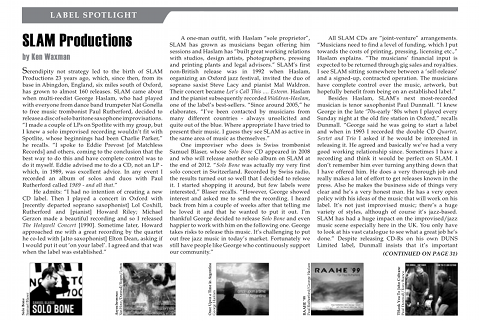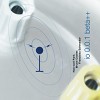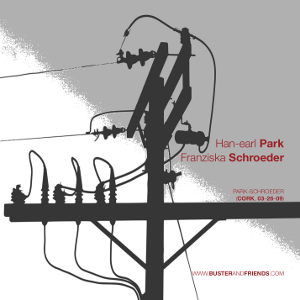Some thoughts and questions from the Scientific American / American Museum of Natural History Beyond Planet Earth Tweetup on January 18, 2012.
Planetariums are cathedrals

I’m moved by the planetarium: I travel to the stars I cannot see, struggle with the scale of what I cannot fathom. Modern planetariums demonstrate the grandeur of God’s creation, but in a secular scientific context. They bring the distant close; make visible the imperceptible; make manifest the abstract.
They are also, like the panoramas of old, playgrounds made of technics.
Visualizing the artificial and the far away

A favorite moment: our tour-guide and pilot of the planetarium refers to the image of the Earth suspended in the dome as a ‘data set.’ Isn’t the discipline of data visualization one of the most impressive of recent human enterprises? It changes everything—science, politics, culture. It affects the way we study and think about music. It affects how we make decisions about war.
I imagine that Bruno Latour’s Janus would point out that data visualization is technoscientific rhetoric. I imagine that Donna J. Harraway’s cyborg would remind us that (imperfect) high-resolution imaging lubricates the military-industrial complex.
Are we still Victorians?

The forgery is as old as the dream of the artificial and the simulated. In the museum, surrounded by simulated environments of reptiles and amphibians, I’m again reminded of the panoramas and dioramas (also technologies for bringing the distant close) of old colonial exhibitions. In the bad old days, scientists didn’t exist as a discreet class or occupation; science was a hobby of the economically comfortable. And here we are, glasses of wine in hand, costumed in geek wear.
Is culture more durable than technoscience?

Fritz Lang’s (blond) Woman in the Moon reappears eighty years later as a (blond) Woman in Mars.
Even as our scientific understanding of the universe changes—demonstrating admirable and jaw-dropping mutability—does our culture stubbornly lag behind? I ask this as, although theories of the origin of the universe, the nature of intelligence, or the treatment of disease has changed radically in my lifetime (sometimes between issues of my favorite science magazine), our dreams are not keeping-up. Can we not apply this mutability to our culture? or are our cultural imaginations still those of cave men (that we recognize in the male, square-jawed astro-hero of George Pal’s films).
How does our culture shape our view of Out There?

Does George Pal’s free-market enterprise of Destination Moon inform Richard Branson’s dream? Does that pulp/Hollywood context make Virgin Galactic culturally intelligible? Traveling Out There stands-in for dreams of expansion. We are still territorial animals reaching for higher ground.
Is Out There Frontier Myth one of White Flight?

George Pal replayed the Pioneer myth; transposing Out West and Back Then to Out There and Way Out When. Sometimes the dreams of the future, however apocalyptic, played out fantasies of racial purging—let’s dream of starting again without the impurities of the Right Here and Right Now. For all the secular humanist transcendence and technology (and war machines) as poetry, Stanley Kubrick and Arthur C. Clarke couldn’t help but portray a future as white as the space station interior. Lightness—a glow that eventually engulfing the innocent, pure, embryonic übermensch—contrasting with the unknowable, perfect, inscrutability of the monolith, the blackness of space, and the darkness of our fur-covered savage ancestors.
modern planetariums are like old cathedrals: demonstrate the grandeur of god’s creation… but w/in a secular scientific context #amnhsciam
Thanks to @amnh and @sciam for an eye opening, questions raising event (and food for a future article or two). #amnhsciam
final one for Charles Ives fans #amnhsciam #charlesives pic.twitter.com/sbWgSP9L
how much do our enterprises—scientific, curatorial, social—owe to older dreams of imperialism and empire? #amnhsciam pic.twitter.com/axRoxVJC
inexplicable need to hear a maniacle laugh 😉 #amnhsciam
blond woman on mars? are we still in Fritz Lang’s pre-WW II dream? #retrofuture #amnhsciam pic.twitter.com/fT72O80C
artful robotics for fans of io 0.0.1 beta++ #amnhsciam #robotics #automata pic.twitter.com/P15HTGSW
so what is the gender/race make up of a mission to mars? #wearestillchildrenofgeorgepal #amnhsciam pic.twitter.com/vh1cI3wq
overheard: “I want to blow something up!” #michaelbayhasalottoanswerfor
public service announcement to fans of Mathilde 253 #amnhsciam #charleshayward #iansmith pic.twitter.com/fumpcnrp
snapshot #theselfreflexivetweetup #amnhsciam pic.twitter.com/Ccd0ceCd
update on uniform at tweetup. women wear cardigans, men wear beards 😉 #amateuranthropology #amnhsciam
is this just a rerun of George Pal’s capitalist imperialism in space? #amnhsciam #capitalism #wevebeenherebefore pic.twitter.com/jYl2GJbc
iPhone camera, meet Hubble CCD; Hubble, meet iPhone. #cyborgencounters #amnhsciam pic.twitter.com/1VIdaRrE
you really were flying in a tin can #davidbowie #astronautics #amnhsciam pic.twitter.com/2avRrAGZ
you really were flying in a tin can #davidbowie #amnhsciam #astronautics
you guys have got to come down. Iggy Pop doing a presentation! #notreally #amnhsciam
“the universe is a much more interconnected thing” #thingsscientistssay #amnhsciam
musicologists need to say things like “if a bacterium ate Manhattan” to get the public excited 😉 @drmelmarshall #musicology #amnhsciam
possible reaction to goat’s cheese? #amphibian #cheese #amnhsciam #blugh pic.twitter.com/8etXDA91
favorite use of language: (image of) earth referred to as a data set. #language #dreamsoftheartificial #simulacrum #amnhsciam
in among exotic animals, post planetarium, I am reminded of old panoramas and colonial exhibitions. we are still Victorians… #amnhsciam
science as a bourgeois pastime? in many ways we are still Victorians. #wineandcheese #amnhsciam
what’s the opposite of emergent behavior? combine free food with circular tables 😉 #emergence #amnhsciam
Lunar flyby. #socool #amnhsciam
those same astronaut archetypes #amnhsciam
Dark Star. Carpenter’s vietnam era social satire. Our propensity for mindless violence transposed into space. #retrofuture #amnhsciam
HAL 9000 cultural shaper our expectations of machine intelligence #amnhsciam #retrofuture #AI
thus far, space travel is reserved for white folk #amnhsciam #retrofuture #scifi #race
all hail Doug Trumbull! #amnhsciam #retrofuture
when worlds collide: revisiting my childhood 😉 #amnhsciam #retrofuture
do we still expect our astronauts to be square jawed heros, good hearted comic sidekicks, or elderly scientists? #amnhsciam #archetypes
In so many ways Fritz Lang was the Michael Bay his time 😉 #amnhsciam #retrofuture
echoes of George Pal’s irony-free, free-market rhetoric in Richard Branson’s enterprise? #amnhsciam #culturalcapitalism #retrofuure
where’s Steve Mirsky? #amnhsciam
amphibians are beyond beyond planet earth #amnhsciam #itmakessensereally
exit under a artificial blue sky #amnhsciam #dreamsoftheartificial #simulacrum #panorama pic.twitter.com/Uad1087x
smart casual? metrosexual? slackerwear? Informal initial survey of the (male) dress code at #amnhsciam. #amateuranthropology
sitting in the planetarium within a sea of glowing smart phones. #amnhsciam #dailydada
participating in the @sciam @AMNH tweetup at 6pm EST today. #planetology #space #robotics
















